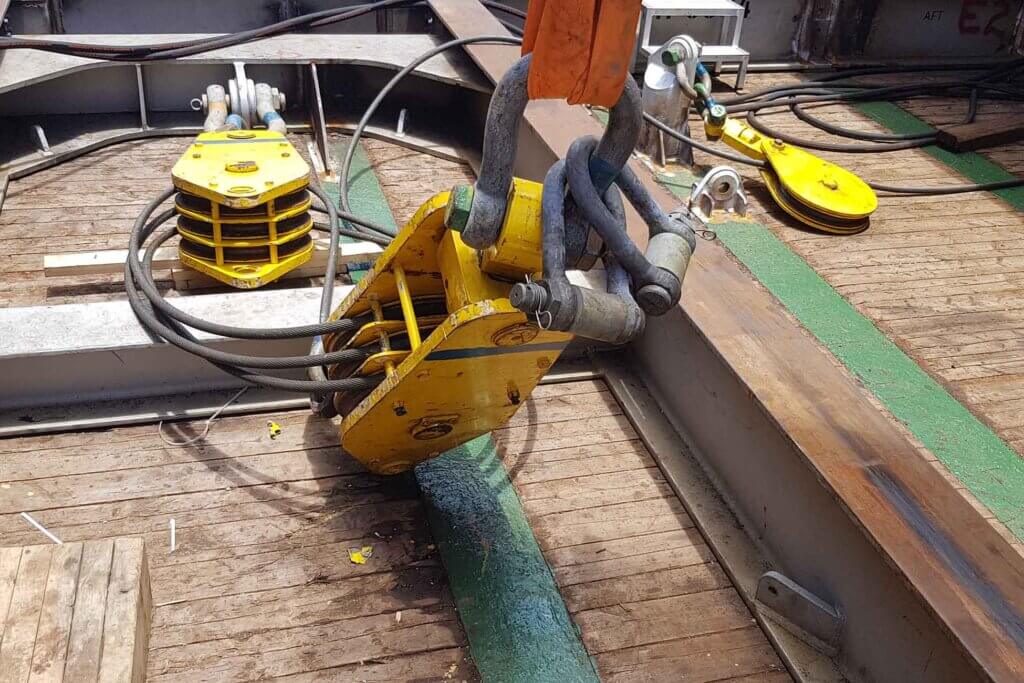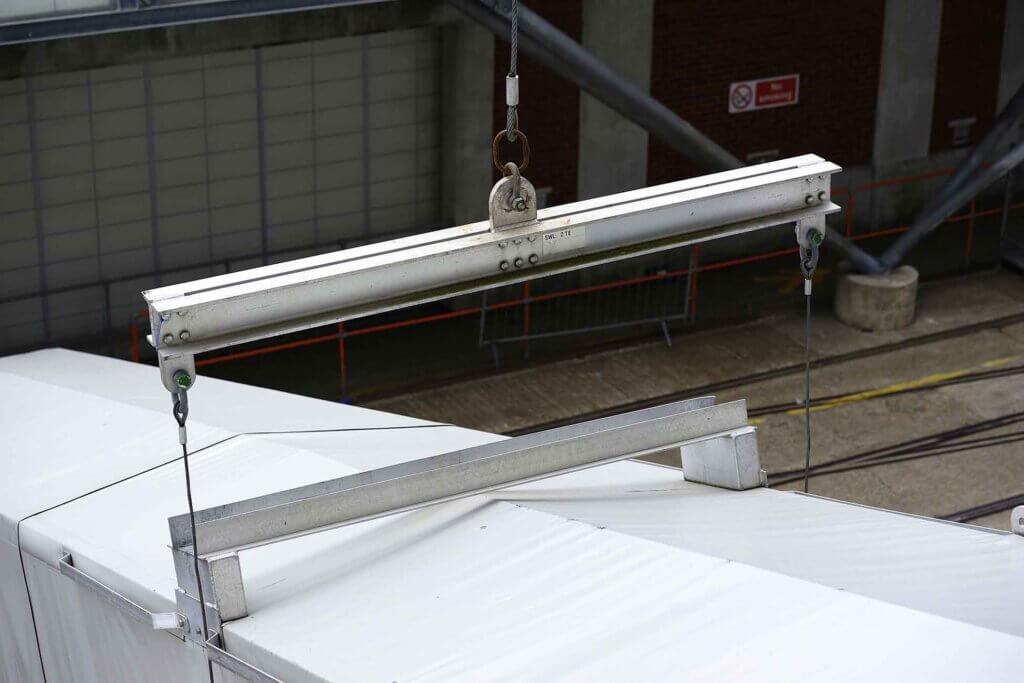

What is the heartbeat of any heavy lifting operation? You guessed it, rigging equipment. It’s not just metal and mechanics; it’s the modest machinery behind towering skyscrapers and monumental structures.
The world may not always see it in action. Its influence, unmistakable across numerous sectors, quietly asserts itself. From construction sites to the forestry industry – rigging equipment plays a pivotal role.
Rigging gear literally moves mountains piece by piece. Whether you’re an arborist hanging high among tree limbs or a construction site foreman ensuring the perfect transition of material – your work hinges on this critical equipment.
Table of Contents
Introduction to Metal Rigging Equipment
Rigging equipment is the first choice when it comes to moving loads from point A to B. Think wire ropes, chains, and pulleys—all designed tough as nails because they have one job: not letting anything fall.
This gear connects loads directly to lifting machines. In fields like construction, manufacturing, and transport, to list a few, the importance of reliable equipment cannot be overstated. If there’s something hefty that needs a lift, rigging equipment steps into the ring.
8 Types of Metal Rigging Hardware

Wire Rope Clips
Wire rope clips or as some like to call them, U-bolt cable clamps, are your go-to for creating those indispensable loops at the ends of wire ropes. Think of them as a convenient way to splice cables or form eyes right there on-site with nothing more than basic hand tools.
Forged wire rope clips add a layer of strength and security. Imagine everything you love about standard wire rope clips but stronger—because that’s exactly what they are. Forged for added durability, these bad boys handle heavier loads without breaking a sweat.
Snatch Blocks

A snatch block might sound like something out of a pirate movie, but trust us; it’s an invaluable tool in rigging systems. Think of it as your best friend when you need to change the direction of a load or increase your mechanical advantage without breaking into a sweat.
A snatch block is a specific type of pulley designed for use with ropes or cables. It typically has a hinged side plate that allows the rope to be inserted without threading it through the block. Snatch blocks are commonly used in rigging and towing applications to increase the pulling capacity or to change the direction of a force.
Shackles
Used to link different parts of rigging setups together, shackles are what keeps your load from saying sayonara mid-lift. There are various types of shackles including anchor shackles, screw pin shackles, bow shackles, and more.
Screw pin shackles are like the Swiss Army knife of rigging equipment. They’re versatile, reliable, and easy to use. These rigging components are pivotal in forging unbreakable links between your burdens and hoisting apparatus, ensuring everything stays precisely where it needs to be.
We know safety is paramount; thus high-quality shackles, hot forged by reputable manufacturers become indispensable tools in any rigger’s toolkit. They ensure not just efficiency but utmost safety – because at the end of the day, that’s what really matters.
Eye Bolts

When it comes to rigging, whether you’re hoisting some raw material into place or setting up machinery around a construction site, every detail matters. And when we say every detail, we mean down to the last eye bolt.
An eye bolt is a type of fastener with a threaded shank, circular loop (the eye), and a larger head. In rigging equipment, an eye bolt serves several important functions such as providing an attachment point for lifting or securing loads. Eye bolts are typically large bolts and are manufactured by forging and thread rolling.
Swivel Hooks

Swivel hooks are a type of lifting hook and they are essential when it comes to dynamic lifting operations.
You’ve got a load that needs moving. It’s awkward; it twists and turns like a cat trying to escape a bath. Enter swivel hooks. These nifty gadgets allow for 360° rotation, making sure your load gets from point A to B without turning into an acrobatic act.
Have you ever found yourself struggling to detangle earbud cords? Imagine doing that but with heavy-duty chains or wire ropes under tension. Not fun, right? Swivel hooks keep things straight by preventing rope twisting during lifts—saving time and nerves.
Chain Slings
Chain slings, with their rugged durability and adaptable nature, truly stand out by consistently performing beyond expectations. But not all chain slings are created equal. Different types have their unique roles where they shine brighter than a polished diamond.
Chain sling options include single-leg chain slings, dual-leg chain slings, adjustable chain slings, and more. The beauty of chain slings lies in their versatility and adaptability across different industries – construction sites worship them; manufacturing plants couldn’t run without them; even arborists find unique ways to use them up in trees.
Turnbuckles
A turnbuckle is a device used in rigging equipment to adjust the tension or length of ropes, cables, or chains. It is made up of of two threaded eye bolts or hooks, each with right-hand and left-hand threads, which are connected by a singular body.
One of the primary functions of a turnbuckle is to adjust the tension in a rigging system. By rotating the central body, the distance between the two eye bolts or hooks can be increased or decreased, thereby adjusting the length of the connected ropes, cables, or chains. Turnbuckles are typically manufactured by die casting.
Spreader Bars / Lifting Beams

A spreader bar, also known as a lifting beam, is a piece of rigging equipment designed to distribute the load of a lifted object over a wider area, thereby reducing stress on the lifting points and providing greater stability during lifting operations.
By spreading the lifting points apart, the spreader bar helps to evenly distribute the weight of the load across multiple support points, reducing the risk of overloading individual components. There are many ways to manufacture spreader bars, the most popular being extrusion and metal fabrication.
The Evolution of Manufacturing Processes in Metal Rigging Equipment
The journey of metal rigging equipment manufacturing is nothing short of fascinating. From the clangs and sparks flying off ancient anvils to the precision lasers cutting through steel like butter today.
Initially, blacksmiths were the artisans behind metal rigging gear. Picture this: a rugged smithy under a dimly lit forge, hammering away at what would become some of the earliest forms of lifting hooks and shackles. It was all about fire, force, and finesse.
Fast forward to now; technology has taken over. We’re talking high-tech CNC machining that carves out components with outstanding accuracy. But let’s not forget robotic arms that weld with such perfection you’d think they were born for it.
We’ve seen an incredible shift from purely brute strength to brainpower driving innovation in how we make rigging equipment today. The transformation in creating equipment isn’t merely a quest for speed or cost reduction; it has birthed avenues for more dependable and secure apparatus that elevate our potential, from setting up massive concert stages to lifting loads atop towering buildings in progress.
In essence, each leap forward in manufacturing tech wasn’t just about getting better tools into workers’ hands; it was fundamentally changing what humanity could build and achieve. So next time you see some hefty machinery doing its thing without breaking a sweat – remember there’s centuries’ worth innovation at play.
Conclusion
So, we’ve journeyed through the world of rigging equipment together. It’s not just metal; it’s a lifeline that keeps dreams suspended in mid-air and ambitions from crashing down. Every wire rope, shackle, and clip isn’t merely a piece of hardware but a bearer of massive hopes and colossal structures.
From selecting the best rigging equipment suppliers to understanding essential components for industrial applications – you now hold keys to making informed choices about your project needs.
The Importance of Choosing the Right Rigging Equipment Manufacturer
Picking the right rigging equipment manufacturer isn’t just about clicking on the first link that pops up after a Google search. It’s important to consider:
- Experience: A top-notch manufacturer will know the best manufacturing technique to product a safe and reliable component.
- Quality: They ensure every piece can handle its advertised load without breaking a sweat (or snapping).
- Safety Standards: The best manufacturers keep safety at heart by only producing products meeting or exceeding industry standards.
In essence? Don’t skimp on quality for price when your load—and safety—are hanging by a thread (or metal cable). Choose wisely.
Finding an experienced rigging equipment manufacturer, who ticks all these boxes will save you time and headaches down the line because let’s face it—no one wants their project grounded due to subpar gear.
Contact The Federal Group today to review your next custom rigging equipment manufacturing project.
Sandor Holzer
Chief Operating Officer
As the COO of The Federal Group, Sandor manages operational excellence and strategic initiatives, leveraging his extensive experience in supply chain optimization and process improvement. With a relentless focus on efficiency and quality, he drives organizational growth and fosters a culture of innovation.
Up Next


